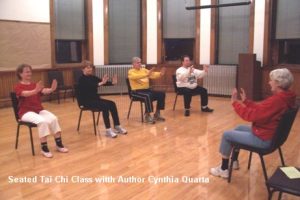 Introduction:
Introduction:
Seated Tai Chi is a modified version of the traditional Chinese martial art that is practiced while sitting in a chair instead of standing. This accessible and adaptable form of Tai Chi offers a gentle and effective way to improve physical and mental well-being for individuals with limited mobility, such as seniors, individuals with disabilities, or those recovering from injuries. In these articles, we will explore the benefits, techniques, and principles of Seated Tai Chi.
Benefits of Seated Tai Chi:
Seated Tai Chi provides a wide range of benefits for practitioners, including:
1. Improved Balance and Strength: The slow, controlled movements in Seated Tai Chi help to strengthen the muscles and improve balance, reducing the risk of falls.
2. Enhanced Flexibility and Joint Mobility: The gentle stretches and rotations in Seated Tai Chi promote flexibility and mobility in the joints, reducing stiffness and improving overall range of motion.
3. Stress Reduction: The focus on deep breathing and mindfulness in Seated Tai Chi can help reduce stress and anxiety, promoting a sense of relaxation and calm.
4. Improved Posture: By promoting proper alignment and body awareness, Seated Tai Chi can help improve posture and reduce back pain.
5. Mental Clarity: The meditative aspects of Seated Tai Chi can help improve concentration, focus, and mental clarity.
Techniques of Seated Tai Chi:
Seated Tai Chi is typically performed in a slow, flowing manner, with an emphasis on relaxation, balance, and coordination. Some common techniques include:
1. Deep Breathing: Practitioners are encouraged to focus on deep, relaxed breathing throughout the practice to promote relaxation and mindfulness.
2. Gentle Stretching: Seated Tai Chi involves gentle stretching and reaching movements to promote flexibility and joint mobility.
3. Mindful Movement: Each movement in Seated Tai Chi is performed mindfully, with a focus on proper alignment, coordination, and balance.
4. Flowing Movements: Movements in Seated Tai Chi flow seamlessly from one to the next, creating a continuous and meditative practice.
Principles of Seated Tai Chi:
Seated Tai Chi is based on the same principles as traditional Tai Chi, including:
1. Relaxation: Practitioners are encouraged to relax the body and mind throughout the practice, allowing for a smooth and effortless flow of movement.
2. Mindfulness: Attention is focused on the present moment, with an awareness of the body, breath, and surroundings.
3. Balance: Seated Tai Chi emphasizes the importance of balance, both physically and mentally, promoting stability and harmony.
4. Internal Energy: Practitioners are encouraged to cultivate and circulate internal energy (chi) through the practice of Seated Tai Chi, promoting overall well-being.






